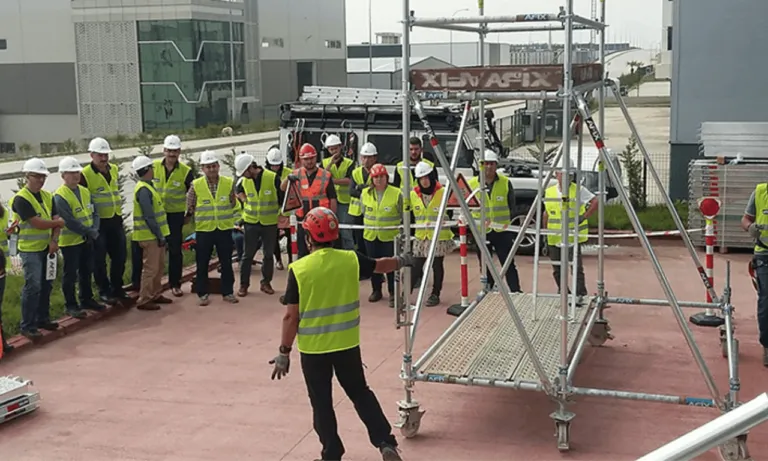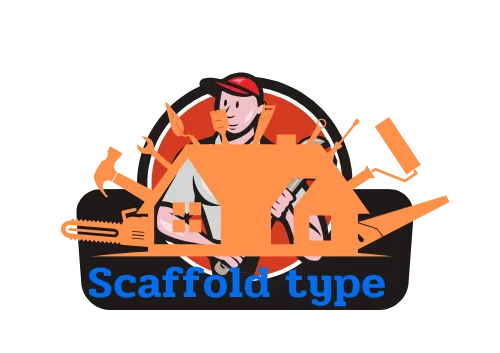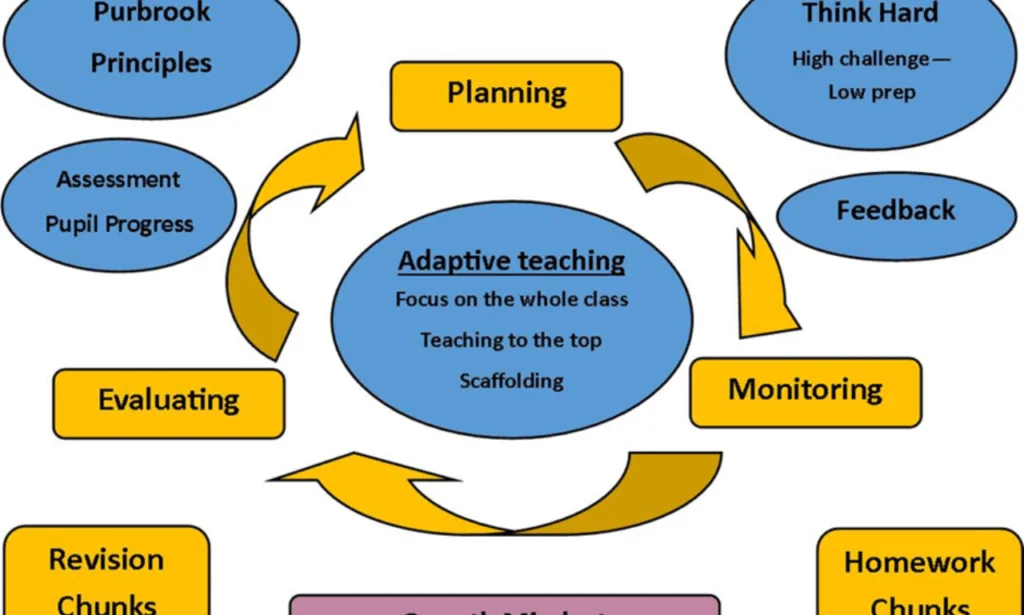Phone:
(+65)8319-0742
In the realm of modern education, Competency-Based Scaffolding stands out as a transformative approach, tailoring the instructional process to match the unique needs and pace of each student. At its core, this method is about crafting personalized strategies that support student learning through every step, turning challenges into opportunities for growth. By focusing on the individual’s zone of proximal development, educators are able to provide just the right amount of assistance, gradually encouraging independent problem-solving and critical thinking skills.
With proper educational scaffolding strategies, teachers can effectively monitor students’ progression and adapt their teaching techniques in real-time, ensuring that no learner is left behind. Moreover, progress monitoring becomes an integrated part of the learning experience, allowing for timely interventions and recognition of student achievements. Competency-Based Scaffolding is about building confidence, enhancing comprehension, and preparing students to reach their fullest potential.
Key Takeaways
- Competency-Based Scaffolding emphasizes individualized support for student learning.
- Personalized strategies crafted within this framework are key to successful knowledge acquisition.
- Educational scaffolding strategies enable teachers to adapt to student needs efficiently.
- Progress monitoring is vital for timely interventions and ensuring student success.
- The approach aligns teaching with each student’s zone of proximal development.
Understanding Competency-Based Scaffolding
The concept of Competency-Based Scaffolding encompasses instructional strategies specifically tailored for facilitating students’ mastery of skills and concepts. Bridging the gap between potential and actual understanding, these strategies are fundamental for a progressive learning environment.
Definition and Origin of Educational Scaffolding
The term ‘educational scaffolding’ emerged in the 1970s, drawing metaphoric inspiration from the temporary structures at construction sites that offer support until the building is self-sustaining. In educational contexts, scaffolding refers to the provisional support teachers provide to students, akin to a guidepost gradually deterred as a learner’s competence solidifies. This meticulous approach is vital in nurturing student autonomy and intellectual growth.
Lev Vygotsky’s Contribution and “Zone of Proximal Development”
Renowned psychologist Lev Vygotsky introduced the theory of the zone of proximal development, spotlighting the sweet spot for instructional impact. This zone delineates what a learner can do independently and what they can achieve with skilled assistance. Grasping the extent of this zone is essential for implementing effective educational scaffolding techniques, allowing educators to tailor their support to optimize student learning outcomes.
Illustrating the “I do, We do, You do” Model
Scaffolding techniques manifest vividly in the “I do, We do, You do” methodology. Initially, an educator demonstrates a task, setting a proficient standard. Subsequently, the class collaborates on the task, reinforcing collective comprehension. Finally, students take the helm, embracing the responsibility to apply new skills autonomously. This progressive teaching paradigm serves as a fundamental scaffold, supporting the learner’s developmental trajectory from dependence to independence.
| Phase | Activity | Purpose | Role of Scaffolding |
|---|---|---|---|
| I do (Demonstration) | Teacher models the task | To provide a clear example and instructional baseline. | High level of teacher-led support illustrating the process and expectations. |
| We do (Guided Practice) | Teacher and students collaborate | To engage the class in shared learning and address misconceptions. | Interactive support balancing teacher guidance with student participation. |
| You do (Independent Practice) | Students work on their own | To foster skill independence and personal mastery. | Minimal support as a confidence-building measure for the student’s autonomous application. |
The Role of Scaffolding in Student Progress Monitoring
As education continues to evolve, the demand for tools that accurately gauge student learning has never been greater. Scaffolding tools have emerged as critical elements in empowering teachers to monitor student progress efficiently. By integrating technology and personalized support, educators can establish a dynamic and responsive learning environment.
Incorporating Adaptive Learning to Personalize Education
Adaptive learning plays a pivotal role in scaffolding by using algorithms and data to customize the educational experience. This innovative approach tailors the content and pacing to suit the unique learning pathways of each student. Beyond its customization capabilities, adaptive learning adeptly synchronizes with scaffolding tools to track and enhance learners’ performance.
Effectiveness in Special Education and Inclusive Classrooms
In the context of special education, the value of scaffolding and personalized learning paths is immeasurable. They are instrumental in building bridges between students’ current understanding and potential knowledge. For students with varying abilities, scaffolding paired with adaptive learning identifies and targets individual needs, thereby fostering a truly inclusive education system.
Enhancing Engagement Through Scaffolding Strategies
Student progress monitoring isn’t complete without evaluating engagement levels, and scaffolding strategies are perfectly aligned for this purpose. Whether it’s through collaborative tasks, problem-solving, or interactive feedback loops, these strategies keep students invested in their educational journey. This not only aids in comprehension but also inspires confidence and promotes continued learning.
Benefits of Competency-Based Scaffolding
The advent of scaffolding in education has brought forth myriad benefits, significantly enriching the academic environment. By instituting a framework of support tailored to individual learning needs, scaffolding has transformed traditional teaching methodologies.
Improving Information Retention and Fostering Confidence
One of the cardinal advantages of scaffolding is its potency in augmenting information retention. Through the methodology of breaking down complex information into manageable units, students are able to digest and recall knowledge more effectively. Concurrently, this incremental approach to learning inherently boosts confidence, as learners experience repeated successes with each stage they conquer.
Building a Bridge from Foundational to New Knowledge
Scaffolding also plays a pivotal role in constructing a cognitive bridge between students’ foundational knowledge and the acquisition of new concepts. This strategic linkage is crucial as it streamlines the learning process, mitigating cognitive overload and enabling a smoother transition to advanced ideas. By laying down personalized learning paths with competency-based structures, students are better-equipped to traverse the span from known to new terrain.
- Streamlined information progression for enhanced comprehension
- Strategic integration of prior knowledge to support new learning
- Personalization of educational content to suit individual learner profiles
Moreover, the incorporation of educational technology has dramatically amplified the efficacy of scaffolding. Digital tools and platforms enable more precise competency assessments, giving educators valuable insights into each learner’s development and tailoring interventions accordingly.
| Aspect of Scaffolding | Benefits | Tools Used |
|---|---|---|
| Information Retention | Improved recall and understanding of material | Memory aids, visual organizers |
| Confidence Building | Increased self-efficacy and willingness to take on challenges | Feedback mechanisms, progress trackers |
| Personalized Learning | Customized experiences aligned with learner needs | Adaptive learning software, interactive modules |
| Competency Assessment | Insightful analysis of learner skills and knowledge gaps | Assessment platforms, data analytics tools |
Therefore, the utility of competency-based scaffolding in education has been monumental, paving the path to a more enlightened and tailored learning experience.
Implementing Scaffolding Techniques in the Classroom
Incorporating effective scaffolding techniques within a learning environment requires a nuanced understanding of both educational theory and the practical applications of these methods. Through careful deployment of educational scaffolding strategies, educators can craft a supportive framework that caters to individual learning styles and promotes the mastery of new skills.
Employing Educational Technology and Scaffolding Tools
To seamlessly integrate scaffolding within the classroom, teachers can turn to the latest educational technology as an integral part of their toolkit. Innovative scaffolding tools such as digital whiteboards, educational apps, and online learning platforms, empower educators to provide interactive experiences that resonate with diverse learners. Moreover, these technologies offer adaptive features, enabling content to be tailored to the unique pace and proficiency levels of each student.
Strategies for Connecting New Concepts to Previous Knowledge
Key to the practice of scaffolding is the connection of new material to a learner’s existing knowledge base. This not only enhances comprehension but also ensures a contextual understanding that promotes long-term retention. Teachers might employ a variety of methods, such as:
- Thought-provoking prompts that recall prior lessons
- Concept mapping to visually link new and familiar ideas
- Discussions that draw parallels between past experiences and new content
Effective scaffolding is informed by assessment and observation, leading teachers to adapt their strategies as students progress. The ultimate goal is for students to no longer need these supports, achieving a degree of autonomy in their learning journey.
| Scaffolding Tool | Function | Implementation in Classroom |
|---|---|---|
| Interactive Digital Media | To engage and visualize complex concepts | Interactive simulations for science experiments |
| Learning Management Systems (LMS) | To organize and provide accessible course material | Modules with incremental quizzes and feedback |
| Collaborative Software | To foster group learning and idea sharing | Group projects managed through shared online workspaces |
Impact of Scaffolding on Personalized Learning Paths
At the intersection of educational scaffolding strategies and the pursuit of personalized learning paths, there lies a transformative approach to education. Scaffolding is at the heart of student-centered learning, enabling educators to tailor the educational experience to the individual needs and abilities of each student. This alignment with modern pedagogical paradigms ensures that every learner can navigate through their educational journey with support that is uniquely suited to them, enhancing the efficacy of learning.
The advent of adaptive learning technology has bolstered the capacity for scaffolding to provide personalized support, underscoring the significance of real-time feedback and adjustments to learning material. These technological advancements have facilitated an environment where individual student progress is not just encouraged but expected, given the flexibility and adaptability of the learning paths on offer.
- Customization of learning experiences to accommodate diverse learning styles and paces.
- Empowerment of students to take ownership of their education through engagement in learning decisions.
- Facilitation of a deeper connection between educators and learners, fostering a collaborative learning environment.
The cultivation of personalized learning paths through scaffolding does not merely address academic proficiency but also attends to the broader aspects of student growth, including emotional and social development. It emphasizes that education is not a one-size-fits-all experience and that every individual deserves a learning journey that honors their unique context and aspirations.
In conclusion, the impact of educational scaffolding strategies resonates beyond the confines of the classroom. As we embrace adaptive learning and commit to student-centered learning, we pave a multitude of pathways, each shaped to fit the learner walking it—leading towards a future where education is truly personalized.
Strategies for Competency Assessment in Education
In the context of education, competency assessment plays a pivotal role in understanding a learner’s proficiency and advancements. Employing competency-based scaffolding not only assists in pinpointing student strengths and areas of growth, but also in planning the subsequent instructional steps tailored to individual learner needs. This process is complemented by an ongoing commitment to professional development in education, ensuring that educators remain at the forefront of instructional strategies and best practices.
Measuring Student Understanding with Scaffolding Techniques
Assessments aligned with competency-based scaffolding are designed to be formative, providing immediate feedback that can be acted upon in real time. These methods encourage the application of knowledge and skills in various contexts, reflecting a more accurate measure of student learning. Here are the primary elements of scaffolding that support effective competency assessment:
- Feedback loops that inform both teacher and student performance
- Adjustable assessments that match a student’s zone of proximal development
- Diverse evaluation methods, including peer reviews and self-assessments
The Importance of Continuous Professional Development
Advancing professional development in education is integral to a teacher’s ability to assess and support student learning effectively. Through continuous professional development, educators refine their skills in providing scaffolded learning experiences, thereby enhancing their capacity for adeptly appraising and supporting competency development. Below is a table illustrating areas of growth in professional development that align with competency assessments:
| Professional Development Area | Focused Outcomes |
|---|---|
| Instructional Strategies | Innovative approaches to measure and support student understanding |
| Assessment Literacy | Enhanced knowledge of designing and interpreting assessments for diverse needs |
| Technology Integration | Effective use of educational technology to facilitate and evaluate student learning |
| Collaborative Practices | Team-based strategies for peer evaluations and shared assessment responsibilities |
As educators continue to engage in continuous professional development, they not only reinforce their own proficiencies but also contribute to a more robust, dynamic, and learner-centered education system, where competency assessment is an integral part of the learning journey.
Conclusion
In the evolving landscape of education, educational scaffolding has proven to be a cornerstone for addressing the myriad ways in which students learn and progress. By placing emphasis on individual growth, competency-based scaffolding empowers educators to finetune their teaching methods to bolster each student’s understanding, paving the way for substantial academic progress. Utilizing this strategic approach, educators are better equipped to monitor and respond to diverse learning needs, promoting a learning environment where all students can thrive.
Moreover, with the integration of educational technology, scaffolding transcends traditional barriers, allowing for more dynamic and interactive learning experiences. This advancement not only enhances the teacher’s ability to deliver personalized instruction but also enables continuous student progress monitoring. As students engage with content through various tech platforms, they build confidence and autonomy in their learning journeys. The alignment of technology with scaffolding strategies ensures that students are not just absorbing information but are also developing the skills necessary to navigate their educational paths independently.
In sum, as we continue to push the boundaries of what is possible within educational frameworks, the adoption of competency-based scaffolding serves as a testament to the commitment of creating adaptive and personalized pathways for success. Whether in a classroom setting or through remote learning modules, this approach advocates for a future where every student is provided the support they need to emerge as critical thinkers, problem solvers, and lifelong learners.
FAQ
What Is Competency-Based Scaffolding in Education?
Competency-Based Scaffolding is an educational approach where teachers provide structured support to help students master new skills and concepts incrementally. It is designed to adjust the level of assistance to match students’ learning needs, enabling them to progress steadily towards independence.
Can you explain the origin of educational scaffolding?
Educational scaffolding was first conceptualized in the 1970s, drawing from construction terminology that involves providing temporary support. It parallels how educators can offer support to learners as they acquire new knowledge or skills, eventually removing that support as students become more proficient.
How did Lev Vygotsky contribute to this educational approach?
Lev Vygotsky introduced the concept of the “zone of proximal development,” which is the difference between what a learner can do without help and what they can achieve with guidance. This theory underpins educational scaffolding, as it aims to target learning within this zone.
What is the “I do, We do, You do” model in scaffolding?
This model is a representation of instructional scaffolding. It begins with a teacher demonstrating a task (“I do”), continues as the class practices together with guidance (“We do”), and culminates in the student applying the new knowledge or skills independently (“You do”).
How does scaffolding contribute to personalized learning paths?
Scaffolding supports personalized learning by adapting to the unique needs, abilities, and interests of each student. It provides individualized support that helps students build on their existing knowledge and develop new competencies at their own pace.
Why is scaffolding particularly effective in special education and inclusive classrooms?
Scaffolding is effective in these settings because it accommodates diverse learning needs and provides tailored support. This flexible approach allows students with various abilities to engage in the learning process meaningfully and progress alongside their peers.
How do educational technologies facilitate scaffolding in the classroom?
Educational technologies serve as valuable scaffolding tools by offering interactive content, adaptive learning programs, and platforms for ongoing assessment. They cater to individual learning styles and provide immediate feedback, enhancing the scaffolding process.
What strategies can educators use to connect new concepts to prior knowledge?
Educators can employ various strategies, including activating students’ existing knowledge before introducing new material, using analogies, and fostering discussions that encourage students to draw connections between what they already know and what they are learning.
What is the role of competency assessment in scaffolding?
Competency assessment is key to determining whether students have mastered the targeted skills and understanding. Within the scaffolding framework, assessments help educators customize their supports and instructional techniques to best suit students’ competency levels.
How does continuous professional development tie into educational scaffolding?
Continuous professional development is important for educators to keep up with the latest scaffolding techniques and educational strategies. It enables teachers to enhance their skills and knowledge, ensuring that they can provide the most effective support for their students’ learning journeys.

Protection Scaffolding: Ensuring Site Safety
Safety is of paramount importance when working at height, and proper protection scaffolding is crucial…

Curriculum Scaffolding Techniques for Educators
Enhancing the educational experience for students involves a delicate balance of effective teaching methods,…

Aluminum vs Tube Couplers: Secure pros and cons
Choosing the right material for tube coupling is key in many industries. The comparison of aluminum vs…

Essential Scaffold User Training Components
Scaffold user training is key to keeping workers safe and following the law in construction. Good training…

OSHA Standards: Sources and Exceptions
The Occupational Safety and Health Administration (OSHA) works to make sure workplaces are safe for everyone….
No posts found


















